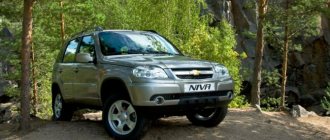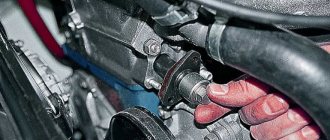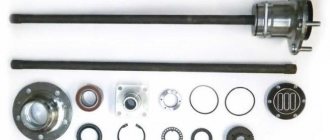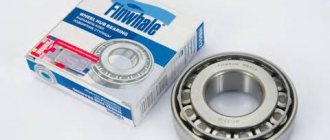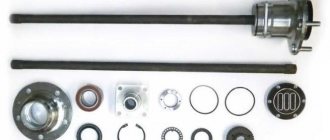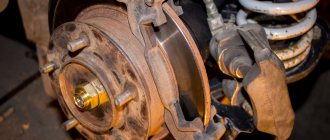Content
- "Chevrolet Niva" and "Lada Niva": comparison of differences
- Safety and comfort "Niv"
- LADA 4×4 and Chevrolet Niva off-road
- What is more difficult and more expensive to maintain: Chevrolet Niva or Lada 4x4
- Resale choice: what sellers offer
- Problems of old people in the secondary market
- What to buy: Niva or Chevrolet Niva
Standard comparisons of “father and son” or “grandfather and grandson” will not apply to these cars: there is not such a large time gap between Tolyatti SUVs. They are more like brothers. The traditional lack of development budgets for the late nineties led to the fact that instead of a full-fledged second generation of the Niva, we received a heavily modernized first one, albeit with a different nameplate on the hood. However, there will still be quite a lot of differences. Let's talk about them.
The transition from VAZ-2121 to 21213 and 21214 - comparison of the new generation Niva with the old one
In February of this year, the Volzhsky Automobile Plant began production of a new family of Niva cars with an engine of increased displacement. Today, these cars have already completely replaced the well-known VAZ-2121. Autoreview has already dealt with some representatives of the new off-road generation from Tolyatti: at one time we introduced readers to the VAZ-21219 car (transitional version), a prototype VAZ-21215 with a Peugeot diesel engine (this engine is installed on the car by JSC Lada-Export in Chekhov near Moscow ), as well as two long-wheelbase modifications - VAZ-2129 and BA3-2130, which are still being produced at VAZ in small series. The heroes of our story today will be two more cars. The first of them is already quite familiar to Russian car enthusiasts. For some reason, traders dubbed it Niva Taiga, although according to the factory specifications this car is listed as BA3-21213. Almost no one knows about the existence of the second car yet: the engine of the VAZ-21214 SUV is equipped with a central fuel injection system.
DESIGN. WHAT'S NEW?
So, instead of the VAZ-2106 engine, the Niva is now equipped with a modernized power unit with a working volume of 1700 cubic meters. cm. An increase in working volume was achieved through the use of larger diameter pistons - from the 21083 engine.
The gas distribution mechanism also suffered: the modified profile of the camshaft cams made it possible to expand the intake and exhaust phases and thereby improve the filling of the cylinders with the working mixture. The improvements affected not so much the power as the improvement in torque characteristics.
It’s also interesting: Renault Duster and Chevrolet Niva are far from direct competitors. Can time smooth out the difference between them?
The BA3-21213 engine is equipped with Solex carburetors with a mechanical drive of the secondary chamber throttle valve and a contactless ignition system with a Hall sensor.
The central injection unit for the VAZ-21214 engine was developed by VAZ STC specialists together with General Motors engineers. The exhaust system of this engine has a catalytic converter, whose task is to take care of the cleanliness of the exhaust. Like all “catalytic” cars, the VAZ-21214 is designed exclusively for unleaded gasoline.
The radiators of the cooling systems of both cars are aluminum.
There are also changes in the transmission. The increased torque made it possible to reduce the gear ratio of the main pair from 4.1 to 3.9 and thereby improve fuel efficiency. The gearbox now has five stages, and torque is transmitted from it to the transfer case using a constant velocity joint (in the previous Niva there was a regular crosspiece).
To reduce the effort on the brake pedal and increase efficiency, the main brake cylinder and vacuum booster from the VAZ-2108 are used here.
APPEARANCE
Representatives of the new family can only be distinguished from the usual “twenty-first” car from the rear, since the front part has not undergone any changes. Tail lights
They became more compact, they moved to the corners of the body, and the tailgate extended down, almost to the bumper.
Above the license plate, covering the backlights, a black stripe appeared with a relief plate Lada Niva 4x4. A little further away - the inscription 1.7.
SALON
There are more changes here. But these are changes, not innovations, since the interior decoration uses parts that have long been used on the well-known Zhiguli and Sputnik cars.
The instrument cluster was taken from BA3-21083 (the block of on-board control system lamps on it is covered with the inscription Lada-Niva 4×4), the thin and completely unsuitable steering wheel (2106) gave way to a more successful one - the “seventh”.
The control of external lighting has also become more convenient (a la VAZ-2108, with a button on the panel), and the buttons and switches on the center console are backlit.
A hydrocorrector for headlights also appeared on the Niva.
The microclimate control system on the previous car did not have a variety of modes. Now, in addition to the central deflectors, it is possible to distribute flows between the windshield and side windows.
The general concept of the interior is the same. However, the salon itself has become more convenient and comfortable.
The front seats now not only fold, but also slide forward
We have already written about the modernized front seats: compared to the slippery and flat “twenty-first” seats, they have clear advantages. There is fabric upholstery, lateral support, and a larger range of longitudinal adjustment. Thanks to the fact that the chair now not only “folds” the back, but also moves forward, not only gymnasts can climb back. The inner door lock handle also changed its position, moving closer to the armrest. It’s more convenient in every way. In addition, when using the car in a cargo-passenger version, the folded rear seat no longer limits the range of longitudinal adjustment of the front seats.
About some little things. New machines are equipped with a set of convenient, easily removable rubber mats (“troughs”). Our drivers will quickly appreciate this. The cigarette lighter and ashtray were moved to the floor tunnel cover and became accessible to rear passengers. The same lid also has a deep stamping that securely holds a pack of cigarettes or some other small item.
What changes are there in the luggage compartment? Firstly, you will not find a keyhole on the back door lock: the door can only be unlocked from the inside. It’s convenient, but in inclement weather you’ll have to get dirty on the handle (previously you could handle it by holding a clean key). Thanks to the low loading height, operating in the trunk has become much more convenient. In addition, an easily removable shelf has appeared: it separates the space for cargo from the passenger compartment. The trunk volume remains the same.
ON HARD ROADS
Start. It is immediately noticeable that the “voice” of the motor has changed. His sound is now drier and more confident.
Getting started has become easier and more pleasant: you can start moving at idle speed, you just need to smoothly release the clutch pedal.
We head out onto the road. In city traffic, the rejuvenated Niva holds confidently, not inferior in dynamics even to the restive Sputniks. Yes, the motor is very different from its smaller brother! The VAZ-2121, I remember, was extremely reluctant to drive under tension, and now even in slow city traffic it is possible to use fifth gear. And the best part is that the engine’s operating speed range has expanded - now even at the “bottoms” there is enough torque to drive in a relaxed manner without forcing the engine.
In general, the Niva has become more flexible and elastic on the road, allowing both drivers with a balanced driving style and aggressors with dynamic manners to handle themselves equally well. But on the “injection” version (VAZ-21214), a noticeable “failure” is felt during active acceleration. According to experts, this is a defect in the “brains,” or more precisely, in the program of the mixture formation control unit. They are currently working on fixing the glitches.
But on the highway this car showed amazing, almost diesel-like flexibility. For example, to maintain a constant speed, there is no need to add gas at all on inclines: the VAZ-21214 power system has a tracking property. It feels like you are driving a car with a cruise-control system.
So under the “belly” of the VAZ-21214 there is a catalytic converter. His worst enemy is leaded gasoline.
When driving in a quiet style, the 21213 is less noisy than its predecessor. Most likely, the situation was affected by a change in the gear ratio of the main pair: the same speed on the old and new cars corresponds to different engine speeds.
If we compare the noise of cars 21213 and 21214, then the “injection” car seemed quieter to us. It is quite possible that in the latter case the catalytic converter plays a positive role, working as an additional muffler.
And yet the sound insulation of both cars clearly leaves much to be desired. Those sitting behind, for example, are very annoyed by the hissing noise of the air escaping through the exhaust ventilation. It occurs at a speed of about 100 km/h.
The use of a constant velocity joint between the gearbox and the transfer case is a measure that, among other things, was supposed to reduce the vibration load of the body. Alas, we did not notice any obvious progress. Most likely, the fight against vibrations needs to be carried out using more radical methods.
Let's note the brakes: they have become more elastic and informative.
OFF-ROAD
Anyone who has had to operate a VAZ-2121 in off-road conditions for a long time will certainly agree that in most cases, the success of overcoming serious obstacles in this car depended on the courage and determination of the driver. Niva with a 1600 cc engine. cm could, for example, easily rush through such a mess, where even more serious cars got stuck “up to their ears.” Naturally, such tactics were often associated with risk: if you get locked up, you get locked up thoroughly.
Drivers of BA3-21213 and VAZ-21214 now have a choice. If you want, move actively, as you are used to doing on the VAZ-2121, but if you want, you can drive slowly and carefully. The upgraded engine allows you to implement both driving styles.
In this sense, the most indicative car is 21214. Thanks to the system of automatic idle speed control, you can engage the first downshift and move confidently without touching the accelerator pedal. The engine seems to add gas itself when entering sand or thick mud. And, on the contrary, it resets it when the resistance to movement decreases, preventing the car from accelerating unnecessarily. Same effect as when driving on the highway.
Driving in this mode in a VAZ-21214 along deep ruts and through a thick mess of black soil, we were never able to “land” the car: the Niva either stopped, skidding in place, or stalled if the obstacle turned out to be insurmountable. In any case, we went back without any problems. It turns out that the updated car seems to have a certain level of cross-country ability, which does not depend on the driver’s qualifications.
This may seem implausible, but we climbed climbs of about thirty degrees in both cars, using only the top row of the transfer case. We didn’t find any steeper climbs, but it looks like the VAZ all-terrain vehicle with a 1700 cc engine is in first low gear. cm will climb forty degrees, unless, of course, the tires fail.
We would like to share one more off-road observation. But let’s make a reservation that this applies to our experiments with cars shod with VLI-10 road tires. When driving dynamically along straight muddy sections, the vehicle's cross-country ability practically does not depend on the state of the center differential: whether it is locked or not, the car behaves the same. But when we tried to crawl, the car with the lock turned off moved less confidently and stopped noticeably earlier. Therefore, we want to warn those drivers who switched from the “twenty-first” car to the BA3-21213 or VAZ21214: if off-road you preach a careful and leisurely style, then turn on the differential lock where on the VAZ-2121 you would, without hesitation, flew by on the move without any blocking.
And also interesting: The owners named the main “sores” of the new Lada 4x4 - Rossiyskaya Gazeta
VERDICT
Let's try to summarize. Ogradno, of course, that the old model was replaced by a whole family of updated cars. The first-born - BA3-21213 - is already actively sold throughout the country, and models 21214 and 21215 are so far focused only on the foreign market. Perhaps they will soon become available to Russian buyers.
The main purchase of gasoline cars is a modernized engine. Its torque characteristics have made it possible to expand the consumer qualities of SUVs, making them more flexible and versatile. This is especially true for the “injection” version.
The interior has also changed noticeably for the better. It’s a pity that the “face” remained untouched: after all, people are greeted by their clothes, especially abroad. Although, according to some reports, active work is already underway on a truly new Niva.
One more thing. We are inclined to think that the vibrations and noises that greatly disturb the Niva are congenital diseases and, as practice has shown, are incurable with superficial modernization. You can get rid of them only through serious changes in the design. Or is VAZ too tough for this nut?
M. ABSOLYUTOV, K. SOROKIN
Video
"Chevrolet Niva" and "Lada Niva": comparison of differences
Officially, since 2004, it, of course, was and is called LADA 4x4, but it still continues to be called simply “Niva” from old memory. Because legal subtleties and copyrights are far from the common man.
And this is fair, because both Nivas have a related chassis, a related transmission and a confusingly similar 1.7 liter engine. They were even modernized, plus or minus together or one after another: the rear suspension mounting points were changed, the cardan shafts were equipped with CV joints, and noise and vibration insulation was improved.
But, despite the commonality of the initial base and modifications, there are many differences. So, the Chevrolet Niva has a different engine mount, a different oil pan, and an original intake tract. The transmission control is different: the LADA 4×4 has three transfer case levers in the cabin, while the Shniva has two. It’s just that in the original, the activation of the lowering and the locking of the center diff are assigned to different levers, while in the later successor they are hung on one.
Also read: Test drive Lada 4×4: Urban does not mean urban
VAZ 2131 “crocodile” vs Chevrolet Niva: from each according to needs
Agree, it’s nice when others guess your desires. For example, someone will think that you dream of a foreign class C car at a reasonable price - and here it is, an assembly plant in Vsevolozhsk. Or he will think that you really want something expensive, but domestic - he will be lucky to bring BMW components to Kaliningrad.
And also interesting: what to choose UAZ or Niva
The most enterprising ones decided to play on eternal values - the need of the broad Russian soul to communicate with their native nature. So, the product of joint creativity of Russian designers and American investors - the Chevrolet Niva - stood on a par with the Niva.
More precisely, he didn’t even get up, but climbed up and started pushing with his elbows. It’s not painful, but it’s assertive. To see who will push whom, we took a brand new, brand new, extended Niva VAZ 2131 with a carburetor engine ($7,700) and a Chevrolet Niva in the “Norma” configuration ($9,900).
What other options are there? “Thirty-one” can be chosen with an injection engine ($7900). And the Chevrolet Niva comes in a “luxury” configuration ($11,100) with cast wheels, tinted windows, heated front seats, and a velor interior.
Safety and comfort "Niv"
The main differences between the two “grandfathers” lie not so much in technology, but in comfort and safety options. For example, LADA 4×4 still does not have seat belt pretensioners, and air conditioning appeared in the list of options only after 2014 with the release of the Urban version.
The 4x4 interior is dramatically inferior to the Niva in terms of visuals and comfort. Firstly, even after all the upgrades, it looks like 1977. Secondly, it’s cramped, narrow, and noisy. The Shniva is also not exactly a Mercedes, but the 2009 restyling from the Bertone studio at least brought its interior closer to the standards accepted in low-cost cars: a three-spoke steering wheel, cup holders, more or less ergonomic chairs, and more recently and the media system with navigation is still ultra-budget and Togliatti, but it no longer looks shameful.
The two brothers are greatly distinguished by the number of modifications - both factory and not so. Chevrolet Niva is a non-alternative five-door body; 4×4 already comes in three- and five-door versions from the factory. And also - a pickup truck, a van, an all-terrain vehicle. And this is not counting semi-amateur crafts like mobile homes.
The Chevrolet Niva can only boast of factory tuning like the Winter Edition and SE trim levels, which comes down mainly to different bumpers, special paint, wheels and a standard snorkel.
Also read: Chevrolet Niva - from dirt to city. One owner experience
Technical characteristics of Niva 2121, Niva 2131 and Niva Chevrolet
At this point, we collected all the remaining indicators, since a number of parameters were left unattended. Let's list at least the priority ones.
- Smooth ride.
- Comfort level.
- Dynamics.
- Controllability.
- Safety.
But for a review article, the specified parameters will be sufficient. These are fundamental indicators for a possible owner or typical stakeholder.
In terms of smoothness, the leader is the extended version of the SUV, since its weight significantly exceeds the weight of the Chevy and the classic Niva. However, if we remember such a concept as operating comfort, then leadership will go to the Chevrolet Niva. The reason for this is power steering (although modern versions of the classic VAZ 2121 have power steering and air conditioning), a more comfortable driving position, improved sound insulation, and ergonomics.
VAZ designers managed to change some of the kinetic qualities of the Chevrolet Niva without technical changes. For example, redistribution of the center of mass has led to increased stability on the road, which directly affects the smoothness of the ride. Reduced vibration can also be considered a secondary factor.
Also interesting: Toyota Harrier 2021: photo, price, configuration, start of sales in Russia
To compare dynamics, you cannot only rely on engine power. There are many examples in which cars with less power have high speed qualities. Thanks to improved aerodynamics and streamlining, the Chevrolet Niva has become more controllable, predictable and dynamic.
In terms of safety, all Niva car models lag significantly behind existing competitors by modern standards, but even if we compare the Niva 2121, Niva 2131 and Chevrolet Niva, then in this regard the Chevrolet Niva looks more profitable. This benefit is evident even in terms of passive safety.
LADA 4×4 and Chevrolet Niva off-road
If you compare the differences between the two old men off-road, you need to approach this issue from two sides:
- if we compare production models;
- when comparing modified models.
The serial ones are identical in cross-country ability, plus or minus, with the difference that the short-wheelbase (2.2 m) three-door is more mobile and flexible off-road than the Niva with its 2.47 meters between the axles. But their transmission and engine limits are close.
But as for the modified versions, there is an endless field of experiments: a Niva on “toothy” wheels will go much further than a 4x4 on standard road wheels. A LADA 4×4 with a snorkel will sail where the factory Niva will stand. And, on the contrary: a Niva with a winch will crawl out of places where an unfinished 4x4 won’t even approach.
In the case of non-factory options, off-road tuning elements begin to play a key role, and the list of differences tends to infinity.
Also read: The Germans about the Lada 4X4: “The car has one name…”
What is more difficult and more expensive to maintain: Chevrolet Niva or Lada 4x4
Same. With a plus or minus note. The market price for the front bumper of the 4x4 Urban is 6,990 rubles, for the Shniva - 6,990 rubles. A windshield for a 4x4 costs around 2,450 rubles, for a Niva – 2,100-2,700 rubles. Bosch oil filter - 318 rubles for 4x4 and 426 rubles for Niva. Complete engine - 66-93 thousand rubles for both.
In general, owning them in everyday life costs about the same amount of money. If you exploit it to the fullest - in the taiga - then there are possible options that are impossible to calculate: everything is too individual.
Servicing a LADA 4×4 will be insignificant, but more expensive if we are dealing with a new or just a warranty car: its maintenance regulations require more frequent visits to the dealer - once every 10 thousand km, versus 15 thousand km for the Niva. As a result, over three years of ownership (or 30 thousand kilometers), LADA 4x4 will require four service visits and maintenance for 28,600 rubles, Niva - three visits and 22,100 rubles (manufacturer prices for September 2020).
Also read: UAZ Hunter was tested in Japan: what impressions did the Russian SUV leave?
Resale choice: what sellers offer
The choice of aftermarket cars is rich: 4,000 Chevrolets and 7,500 4x4s. After all, the original Niva has been on the assembly line for more than 40 years, Niva for almost twenty. With an eye on trouble-free driving every day, of course, you need to look at the latest options. All the factory modifications are screwed in there, of which there are quite a few. There is minimal mileage and the most advanced equipment. In the case of LADA 4×4, let me remind you, this is an air conditioner, in the case of Niva it is a media system.
If you dig around and look for exotics, you can find pre-restyling Chevrolet Niva with an experimental 1.8 liter, 122 hp engine. With. from Opel. Now it’s almost a museum rarity, the number of offers on the market barely exceeds a dozen, but it’s worth it: it has a much better interior (with seats made by the same Opel) and a Japanese Aisin transmission. And it’s inexpensive: the rare Niva Fam1 can be found ranging from 260 to 500 thousand rubles. True, the mileage is corresponding: 200-300 thousand km each.
But mostly, of course, there will be simpler cars - with the native Tolyatti 1.7 liter. And you have to choose meticulously: there are no two identical copies (just as there were none even when they came off the assembly line).
Also read: Chinese “SUV” at the price of “Niva”: review of Lifan X60 I (before restyling)
What is there and what is missing: comparison of configurations
The equipment largely determines interior comfort and control. Both cars can be purchased in several trim levels. Among the features we note:
- The instrument cluster for both models is almost the same. But Niva’s panel is much nicer and more convenient.
- The Chevrolet steering wheel is much more comfortable. Moreover, only this version has a built-in airbag, the second one is made for the passenger.
- Both cars can be purchased with additional options.
SUVs come in several trim levels. The cheap version of the Chevrolet L costs 687,000 rubles, the Lada in the Classic version costs 520,000 rubles.
Version L is characterized by the following options:
- Spare wheel as standard. It is steel, like the main kit.
- The exterior mirrors are electrically operated and heated. These options are not included in the basic configuration of the competitor, but provide the driver with comfort when driving the vehicle.
- Power steering. It provides easy steering wheel movement in a wide variety of conditions. Previously, the option was not included in the basic version of the SUV, which made driving in off-road conditions or within the city more difficult.
- Headlights corrector. It is not available in Lada; it allows you to adjust the light dispersion to suit your own conditions.
- Cabin filter. This option provides the most comfortable driving conditions.
- The rear seats can be folded down. They significantly increase the luggage compartment when transporting large loads.
- The steering column is height adjustable. Due to this, the driver, regardless of his height, can sit comfortably.
- Power front doors are a standard feature on almost all cars.
- Central locking.
- For rear passengers, there were outlets for heating the feet. In winter, the required comfort is provided in the cabin. Lada does not have this option, so the rear passengers will freeze in severe frost.
- Immobilizer. This feature significantly improves vehicle safety.
Lada in the Classic configuration is characterized by the following features:
- A spare full-size wheel is included in the package.
- Hydraulic booster. Previously, when parking or driving around the city, you had to make a lot of effort to control the vehicle; this option was included only in expensive versions.
- Light window tinting.
- The front doors have power windows.
- Audio preparation. It is worth considering that the car practically does not have a music system. Preparation for audio involves creating special niches for acoustics and laying wiring.
- A V12 socket was placed in the cabin. It is suitable for connecting various mobile devices.
- There is a mount for a child seat. According to established laws in many countries, children under the age of 12 must only ride in a special seat.
- Daytime Running Lights.
In the most expensive configuration GLC Niva costs 734,000 rubles, additional options are as follows:
- Front fog lights. They are required to increase the degree of illumination of the road surface when driving at a time of poor visibility.
- Alloy wheels. They tend to look more attractive and reduce the overall weight of the vehicle.
- Bumpers and other elements are painted in body color. Due to this, the car looks more attractive.
- Higher quality upholstery materials.
- Additional lamp in the rear.
- There is a USB socket. Today, many devices run on USB. When connected, the battery is charged.
- Air conditioning and cooling box.
- Security alarm. It significantly increases vehicle safety.
- Parking Assist System - simplifies the process of parking a vehicle in difficult conditions.
- Seat height adjustment. This additional option allows drivers of almost any height and build to sit comfortably.
- Optional soundproofing package. It provides the greatest comfort when traveling on the highway or off-road.
- Heated front seats. This option provides comfortable conditions when driving in winter.
- Multimedia system. It is represented by a large display with a large number of different control units. The system can play a wide variety of files and display a map with navigation.
Also interesting: Selection of good AT tires for Niva and Niva Chevrolet
The most expensive Lada comes in the Black Edition. It costs 580,000 rubles. The features are as follows:
- Body paint is Panther color.
- Additional sound insulation. It significantly increases comfort in the car. Without the additional package, the noise from the engine and transfer case is very strong.
- Light window tinting.
- Regular air conditioner. It has only one operating mode.
- 12V socket in luggage compartment.
- Brake assistance system BAS. It should significantly improve safety during an emergency stop.
The information above indicates that Chevrolet should be chosen when you need a comfortable car. In the best configuration, it has almost all the required options. Lada has few options for comfort.
Problems of old people in the secondary market
Most problems at the start can be identified by checking the operating history. Here, for example, is a nice option: not the most record-breaking mileage, bargaining is announced at the hood.
And there will be plenty of reasons to bargain. At a minimum, because the car is broken.
And it was seriously beaten - from the front and from the side.
In general, let’s move on right away and see what the owners of Shnivy offer.
And again the report from avtocod.ru tells us not to waste time and move on immediately.
Firstly, the car has a lot of owners and a duplicate title - it is very worn. Secondly, the mileage is covered. Thirdly, there is a ban on registration actions on the car. We don’t even waste time on inspection and look further.
Also read: Lada Xray: the whole truth from the owner’s lips

